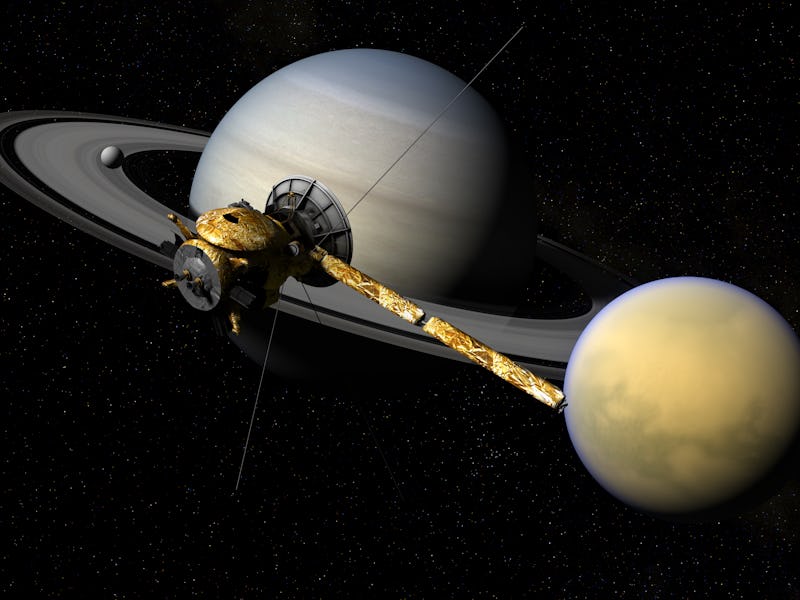5 Surprises Cassini Revealed About Saturn and Its Moons
It's time to reflect on Cassini's legacy.

NASA’s Cassini spacecraft has entered the final two weeks of its “Grand Finale,” which will culminate with a magnificent plunge into Saturn on September 15. As such, now seems like a fitting time to look back on what Cassini helped us understand during its 20 years in operation.
After nearly seven years in transit, Cassini arrived at Saturn in 2004 and began orbiting the gas giant. In the years since then, it has collected images and data on the Saturn system, including the planet itself, as well as its rings and many of its 60 moons.
Here are the most surprising findings that changed what we thought we knew about the Saturn system:
Visible-light images of Saturn from Cassini.
“The Big Empty”
In addition to spectacular views of two of Saturn’s moons, Titan (top left) and Enceladus (top right), Cassini gave scientists their first look at the space between the planet and its rings. In its Grand Finale, Cassini has repeatedly dived into this area. Surprisingly, scientists found that this space is actually quite peaceful. In a NASA teleconference on Tuesday, Earl Maize, Cassini project manager, told reporters that they would have put Cassini into the gap sooner if they’d known.
“Give how benign this environment is, it’s something we could have jumped into much sooner in the mission,” said Maize. He identified the gap as a potential target for future missions. “Now that we know, it’s a place we’d be very happy to spend more time.”
Saturns icy moon, Enceladus
The Liquid Core of Enceladus
In April, NASA announced that scientists had identified evidence of microbial life below the surface of Saturn’s icy moon, Enceladus. Cassini swooped through a plume emitting from the south pole of this moon, gathering chemical data that revealed molecular hydrogen. This suggests that the sea below the moon’s surface could contain conditions similar to those found in Earth’s deep-sea hydrothermal vents, around which chemosynthetic microbes thrive.
Saturn's giant storm
A Storm the Size of Earth on Saturn
In perhaps one of the most surreal images of Saturn, Cassini captured a hexagonal storm system at Saturn’s north pole. This cloud formation, whose sides are each longer than the diameter of Earth, persisted for months.
Saturn's largest moon, Titan
Titan’s Lakes of Methane
Early in the Cassini mission, back in 2005, the Huygens lander descended onto the surface of Saturn’s largest moon, Titan. It captured video on its way down, giving researchers an unprecedented look at this moon’s surface. The Huygens probe, in conjunction with the Cassini orbiter, helped scientists discover oceans of methane on Titan’s surface. It’s possible that these oceans contain extraterrestrial life.
A summer storm on Saturn
Seasons on Saturn
While we may think of seasonal changes as something Earth has cornered the market on, Cassini’s data revealed that Saturn has seasons, too. Spending years circling Saturn, Cassini observed seasonal changes over and over. In this image, you can see one of Saturn’s late summer storms that commonly appeared in the northern hemisphere. This particular storm, NASA scientists say, formed a ring around the entire planet and wrapped back around on itself.